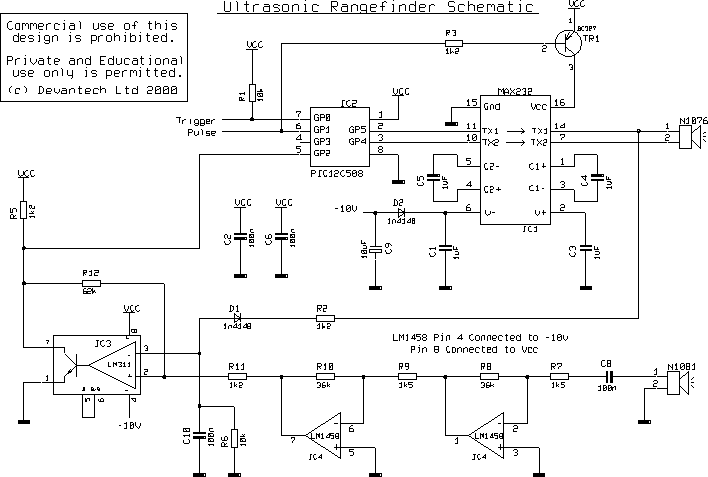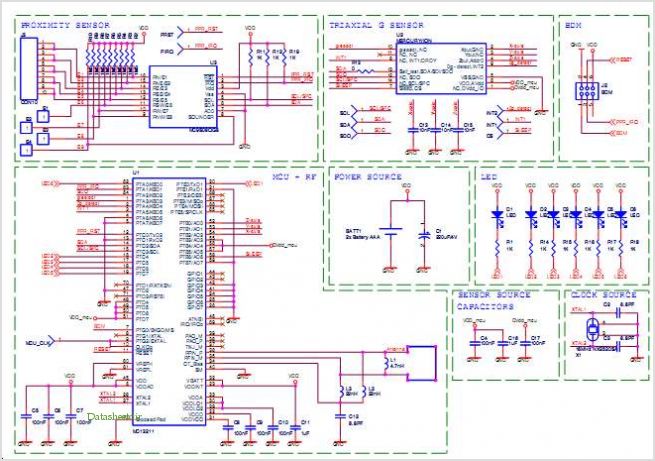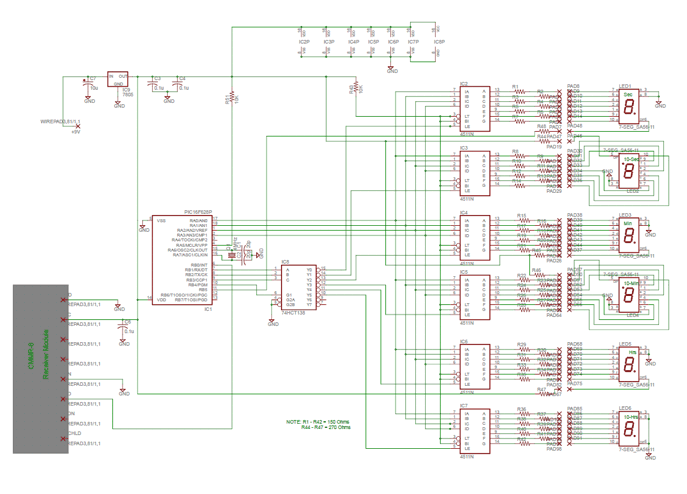
Ultrasonic SensorCircuit Based On The MAX232 IC

The following circuit illustrates an Ultrasonic Sensor Circuit Diagram. This circuit is based on the MAX232 IC. Features include a quiescent current of 150mA.
The Ultrasonic Sensor Circuit utilizes the MAX232 integrated circuit, which is primarily designed for converting signals from a TTL level to RS-232 level and vice versa. This is essential in applications where ultrasonic sensors require communication with microcontrollers or other devices that operate at different voltage levels.
The circuit typically includes an ultrasonic transducer, which emits sound waves at a frequency above the audible range. When these sound waves encounter an object, they are reflected back to the sensor. The time taken for the echo to return is measured, allowing for distance calculation to the object.
In addition to the MAX232, the circuit may incorporate additional components such as resistors, capacitors, and diodes to ensure proper signal conditioning and power supply regulation. The quiescent current of 150mA indicates that the circuit is designed to operate efficiently, minimizing power consumption during idle states.
The output from the MAX232 can be connected to a microcontroller, which processes the received signal, calculates the distance based on the time delay of the echo, and can subsequently control other devices or display the results. This circuit is widely used in applications such as obstacle detection, distance measurement, and automation systems.The following circuit shows about Ultrasonic Sensor Circuit Diagram. This circuit based on the MAX232 IC. Features: 150mA quiescent current, .. 🔗 External reference
The Ultrasonic Sensor Circuit utilizes the MAX232 integrated circuit, which is primarily designed for converting signals from a TTL level to RS-232 level and vice versa. This is essential in applications where ultrasonic sensors require communication with microcontrollers or other devices that operate at different voltage levels.
The circuit typically includes an ultrasonic transducer, which emits sound waves at a frequency above the audible range. When these sound waves encounter an object, they are reflected back to the sensor. The time taken for the echo to return is measured, allowing for distance calculation to the object.
In addition to the MAX232, the circuit may incorporate additional components such as resistors, capacitors, and diodes to ensure proper signal conditioning and power supply regulation. The quiescent current of 150mA indicates that the circuit is designed to operate efficiently, minimizing power consumption during idle states.
The output from the MAX232 can be connected to a microcontroller, which processes the received signal, calculates the distance based on the time delay of the echo, and can subsequently control other devices or display the results. This circuit is widely used in applications such as obstacle detection, distance measurement, and automation systems.The following circuit shows about Ultrasonic Sensor Circuit Diagram. This circuit based on the MAX232 IC. Features: 150mA quiescent current, .. 🔗 External reference





